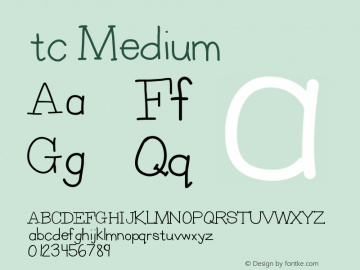
Una bala cerca en Ciudad Juarez. Yo le sostuve el sombrero cuando le pas? Yo le dije hacia donde deb?a disparar la ametralladora el d?a que le arranc? Bajo el estigma del quinto sol pdf.
Hanzipen Tc Free Font The best website for free high-quality Hanzipen Tc fonts, with 9 free Hanzipen Tc fonts for immediate download, and 16 professional Hanzipen Tc fonts for the best price on the Web.
I'm using Mac OS X (Mavericks) which ships with a large selection of Asian fonts. Most of them come in two versions, labelled SC and TC. After a bit of head scratching, I realized they stand for Simplified Chinese and Traditional Chinese.
Now, I'm not conversant with the finer points of the Unicode standard and how it deals with Simplified Chinese vs. Traditional Chinese. I'm sure Apple's developers have their reasons for coping with the issue by doubling up the typefaces. What I'd like to know is, does it touch code points used in Japanese kanji? Is either of the two version preferable (or necessary) when typing Japanese? Or do they only differ in strictly Chinese typography, so that either version is OK for Japanese?
Should I avoid both and stick with fonts made specifically for Japanese, such as the Hiragino fonts? On the topic of font names, what is the meaning of the 'N' version of Hiragino fonts, as in 'Hiragino Mincho Pro' vs. 'Hiragino Mincho ProN'? First off: Not sure what you mean by 'simplified' vs 'traditional' train wreck. Japanese is not Chinese. There is only one standard set of characters, which includes a few simplifications decided after the war (学 etc): nobody uses old-style characters in daily life.
So that part is settled. Japanese code points are overall the same as Chinese traditional ones, with many small differences (aforementioned simplifications from the 1946 kanji revision). If you want to use a Chinese font to write Japanese text, you will indeed need to use one that supports traditional characters (, btw). But in addition to the set of Japan-specific, this Chinese font is unlikely to support kana: reformed kanji would appear weird (/archaic-looking) and another font would be substituted for kana, with a less than optimal visual result. So unless you are writing a very small piece of text and there is a very specific reason you want some Chinese font, you should probably stay away from them.
In conclusion: best stick with Japanese fonts for regular Japanese text. Also best not to go too much into exotic fonts unless you know exactly what you are doing. To give you an idea, many Japanese fonts that foreigner like to use ('because they look pretty') end up feeling to a Japanese, the way Comic Sans feels to a Western designer. Hiragino is one of the most respected foundry in Japan (not the font family, btw, that'd be 'Mincho' or 'Kaku'): people used to have to purchase their fonts on the side (for large amounts of money) until Apple started packaging them in OS X, so you can't go wrong with Hiragino Mincho/Kaku (serif or sans, depending on what you are doing with it). There was a different question on Japanese typography, which in the meantime has been moved to a different site, so this question might be regarded off-topic for this site. In any case, Chinese fonts are quite different in style from Japanese fonts, even though both languages have a large overlap. My recommendation would be to stick to fonts, which are designed for Japanese, be that Hiragino or otherwise.
(I don't know how many Japanese fonts your operating system provides, but there are a handful of usable free Japanese fonts available.) I am not sure what the 'N' stands for, but it supports the relatively new JIS X 0213:2004 standard, so I guess 'N' means 'new'. (It appears though, that have changed shape in this new JIS2004 standard, so you'd probably be safe using either version.).
Just done a bit of digging and HanziPen SC doesn't appear in any iOS font lists I can find. It isn't on any of my iOS devices either, including my iPhone that originally shipped with iOS 7 installed. However, according to, it shipped as an installed font with OS X 10.9 Mavericks -- it may have shipped with an earlier version but I can't find any reliable info about that. In the more recent macOS versions, it was not included but as mentioned, it can be installed through Font Book. I am not exactly which was the first version not to include it, but according to, it was a downloadable in macOS 10.12 Sierra.
It looks as though it can only be made available to individual apps which include the necessary coding to download it. I was hoping it would be possible to install a configuration profile in the usual way, so that it would be available globally. Affinity asked to download some fonts before opening this file but I am not sure why. I can't remember if I mentioned this but this file used to work fine for over a year. I just found out if I type some new text and change it to HanziPen SC it works! But there is no way I can change that existing text over which means I have to go back and redo the spacing.